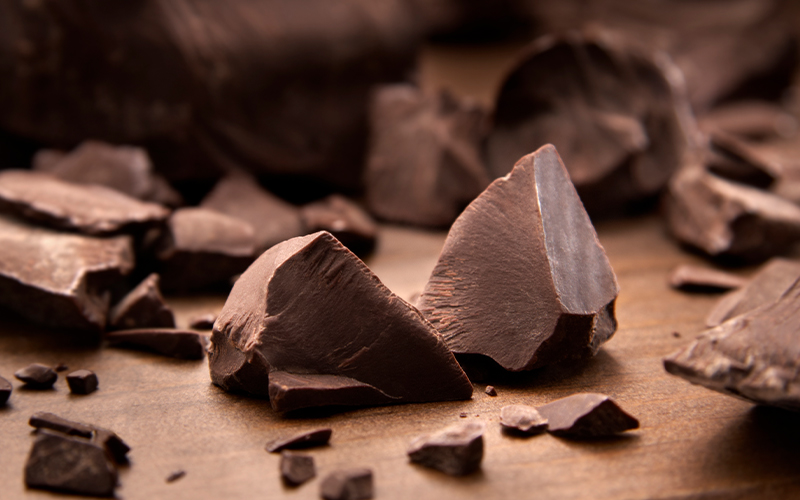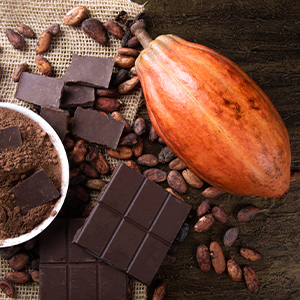Benefits of Dark Chocolate

Sweet news! If you are a chocolate lover, you might be surprised to learn that your favorite delicious treat has some health benefits. We explore how chocolate may be healthy – and what to look for when you crave this sweet treat – with the help of Munson Healthcare Clinical Dietician Laura McCain, RD, CNSC.
White, Milk, or Dark Chocolate - What’s the Difference?

Dark chocolate contains the most cocoa, which you’ll usually see displayed by percentage. The higher the amount of cocoa, the lower the amount of sugar.
Milk chocolate, as its name reveals, means the chocolate has been mixed with milk. This form of chocolate contains less cocoa and cocoa butter. Some brands of milk chocolate don’t contain cacao butter at all.
And white chocolate? This type is made with filtered cacao butter, sugar, and milk. While the cocoa butter adds flavor, the rich brown cocoa powder is left out.
What Makes Chocolate Healthy?

Cocoa seeds contain antioxidants that can be beneficial for our bodies in all sorts of ways, including reducing the risk of heart disease.
“Antioxidants help balance inflammatory versus anti-inflammatory processes within our bodies,” explains McCain. “Many Americans live in a low level chronic inflammatory state, created by lifestyle choices such as the lack of fruits and vegetables we eat, lack of exercise, and high stress.”
Eating foods that are rich in antioxidants can help fight inflammation – and pure dark chocolate contains high levels of antioxidants. But think twice before you dive into your favorite chocolate bar: Milk and white chocolates, as well as lower-quality dark chocolate, may have less (if any) cocoa powder and cocoa butter. In their place may be low-quality fats and oils that not only lack antioxidants but may contain unhealthy saturated fats. The word “hydrogenated” on the label is a common giveaway.
How to Enjoy Dark Chocolate Mindfully
“Although chocolate can offer some benefits like antioxidants, it still falls into the dessert category. There is not a recommended serving size per day, such as with vegetables,” shares McCain.
If you are going to indulge in a delicious dark chocolate treat, Laura has tips to ensure it’s the most enjoyable.
“Look for high-quality dark chocolate,” McCain says. “Eating the chocolate at room temperature and allowing it to melt on your tongue will give you the fullest flavor and help you be satisfied with a smaller amount.”
The most important thing to remember is to enjoy your dark chocolate treat mindfully. This means allowing yourself to indulge without guilt.
“Balance is key here,” shares McCain. “Try not to make a ton of rules around eating. If you do decide to eat a dessert, savor it!”
Check out more tips on mindful eating here.